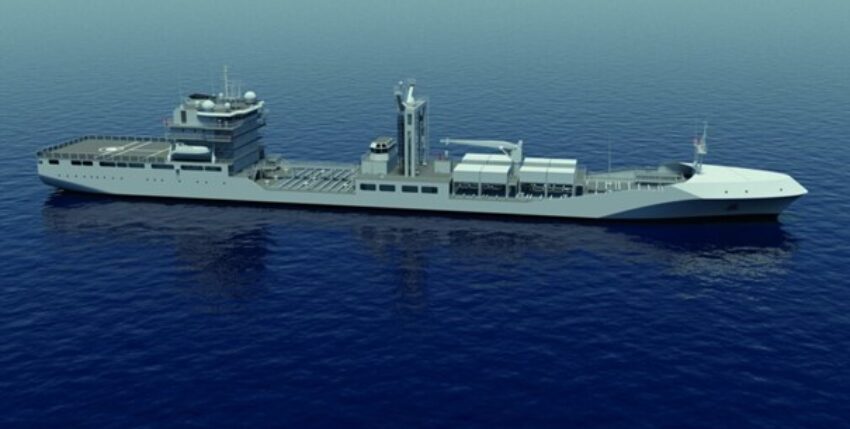The Friedrich Lürssen shipyard in Bremen has been commissioned to build the two new fuel transporters for the German Navy. The new units, class designation 707, are to replace the ageing "Rhön" and "Spessart" from 2024. Lürssen states that it is working together with Meyer Werft on the construction. The Neptun shipyard in Rostock is to bear the lion's share of the programme.
The navy's future floating refuelling stations stand out from their predecessors, the "Rhön" and "Spessart" (Class 704), both visually and in terms of performance. Not only do they comply with the applicable guidelines (IMO, EU) that tankers must have a double hull. They also fulfil the NATO requirement for NBC suitability. According to the Lürssen shipyard, their cargo volume will be around 12,000 cubic metres of aviation and diesel fuel. Up to three parallel refuelling operations at sea should be possible. The ships also offer the option of placing modular container units, for example workshops or spare parts storage.
In addition, the Class 707 fuel supply vessels will also meet current environmental standards with a ballast water treatment system and modern exhaust gas aftertreatment to reduce emissions in accordance with IMO Tier III. Compared to the originally formulated military requirements, the parameters have been significantly changed in two areas. The previously required speed of 20 knots has now been increased to a maximum of 18 knots. The draught has been increased to 9.5 metres. This made it possible to orientate towards more common designs. On the other hand, the navy now has to rethink the stationing of the ships. The military requirement previously stipulated that the fuel transporters should remain at a draught of eight metres in order to avoid deepening the harbour at the Wilhelmshaven naval base.
Following approval by the Budget Committee of the German Bundestag on 23 June 2021, the financial requirement for the two fuel supply vessels is estimated at 914 million euros. Comparable units have unit costs of around 140 million euros (the Norwegian "Maud") and around 210 million euros ("Tide" class of the Royal Navy).
Text: Hans-Uwe Mergener; Graphics: MTG











One Response
Who actually decides on such completely overpriced ship procurements, and that without important military features? Why aren't considerably(!!) cheaper civilian tankers procured, supplemented by the necessary military electronics, container slots and a helicopter landing deck? Unbearable!